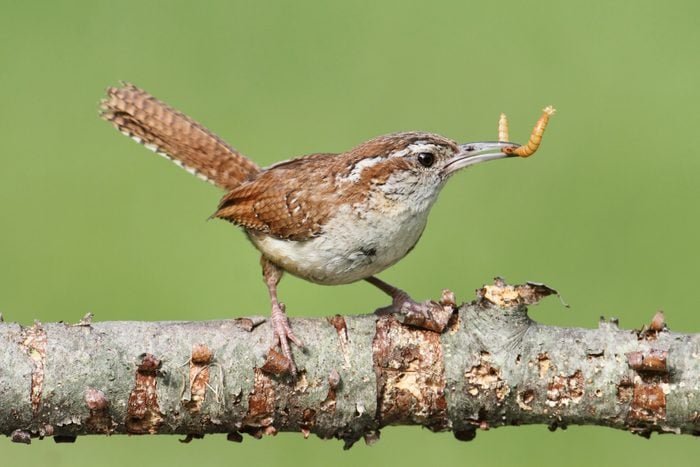
Types of Wren Birds to Look for
Despite their cryptic brown coloration, wrens are hard to overlook. Two of the most well-known types of wrens in North America are the Carolina wren and the house wren. But there are many several other members of the wren family in the Southwest that birders should know.
The group of birds is known for boisterous behavior and near-constant chatter. They investigate cracks, crevices and cavities, hence the family name Troglodytidae, meaning cave dweller or explorer.
According to field biologist Doug Whitman, who researches birds from Montana to Arizona, “Wrens are awesome because they have some of the best songs, but what really gets to me is that they all have such great personalities.”
Do wrens sightings have special meaning?
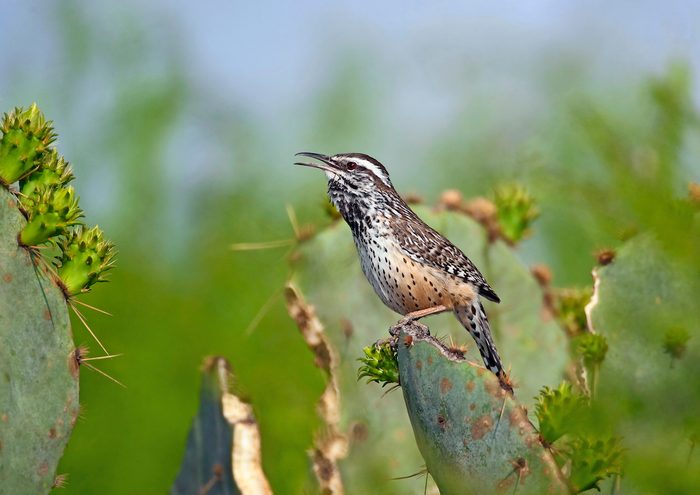
Cactus Wren
As the state bird of Arizona, the cactus wren is one of the most iconic species of the desert southwest. It’s also the largest wren species in the United States. While these birds are nearly double the size of the other types of wrens, they share the typical long, stiff tail and a slightly curved bill structure.
“The most amazing thing about cactus wrens is that they build their nests in cholla cactus branches to be protected from predators,” Doug says. The wrens use these elaborate spherical or football-shaped structures for roosting throughout the year, not just during the nesting season.
Cactus wren vocalizations have a “gurgling quality to them,” Doug says. This species can be heard anywhere that has enough cactus habitat to support them—even in cities—from southern Utah into Mexico.
Learn what foods wrens eat and how to attract them.
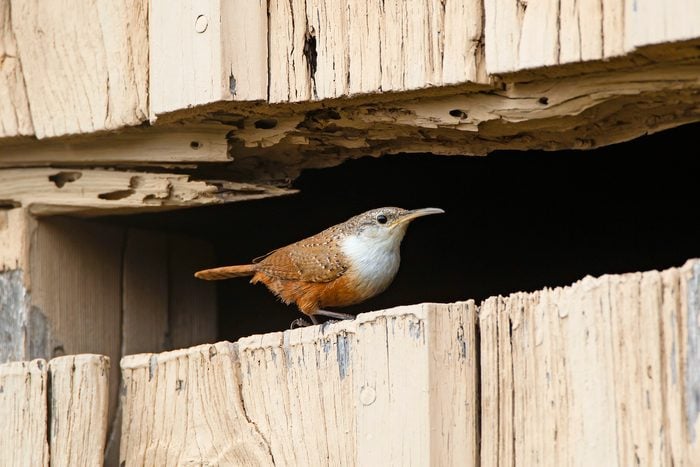
Canyon Wrens
The canyon wren is a bird of the wilds from southern British Columbia to southern Mexico. It is the soundtrack for many southwestern rafting adventures. Even if you aren’t floating, listen for the set of sweet descending whistle notes that slow down and seemingly fade away. Both males and females sing, and the species is vocal outside the breeding season. Doug recalls hearing canyon wren songs nearly echoing off towering walls of stone. He suggests that the canyon wren acts “a bit like a nuthatch that specializes in cliff faces.”
Canyon wrens look like Carolina and Bewick’s wrens without the eyebrow stripes. Canyons have a longer bill. This wren is richly rufous brown with strong markings on the wings and tail. The throat area is plain white and contrasts sharply with the rich coloration.
Wren vs sparrow: What bird are you seeing?
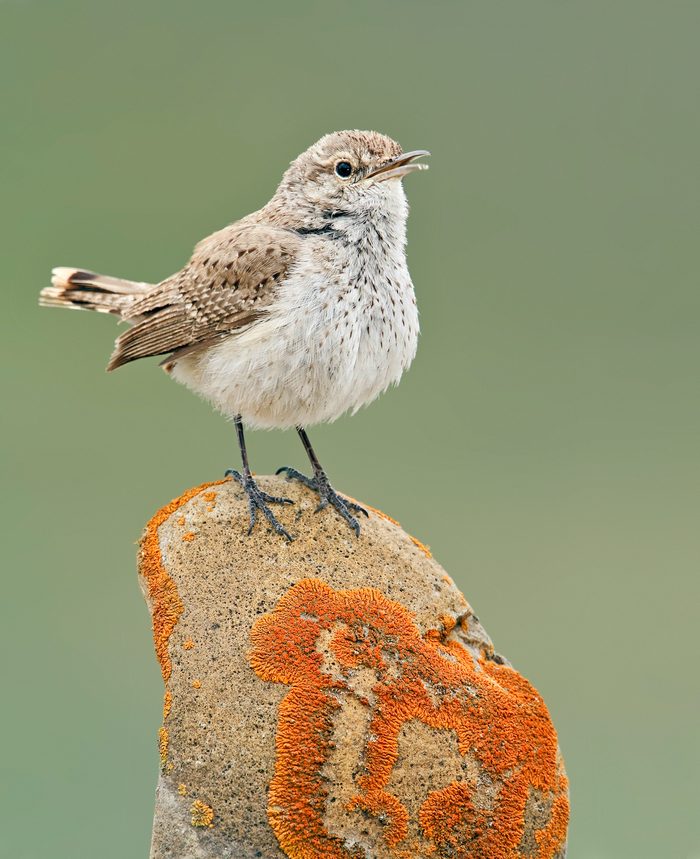
Rock Wrens
Rock wrens could be confused with canyon wrens easily enough, but this species is fainter in coloration overall. A hint of an eyebrow line is often visible. Look for fine specks along the throat. The sides and belly have a pale peach wash, and the undertail coverts are strongly marked.
“Rock wrens are aptly named,” Doug says. “I rarely see them away from a pile of rocks or a few big boulders.” The somewhat desolate-looking habitats they thrive in can support a good number of birds.
These types of wrens bob and dip as they rest on their prominent stone perches. Listen for their varied calls belted out in repeated phrases. In summer, they can be found from sea level to over 12,000 feet in elevation, but they move to lower locations and migrate from the northern portions of their range in winter.
Hear what a Carolina wren’s song sounds like.
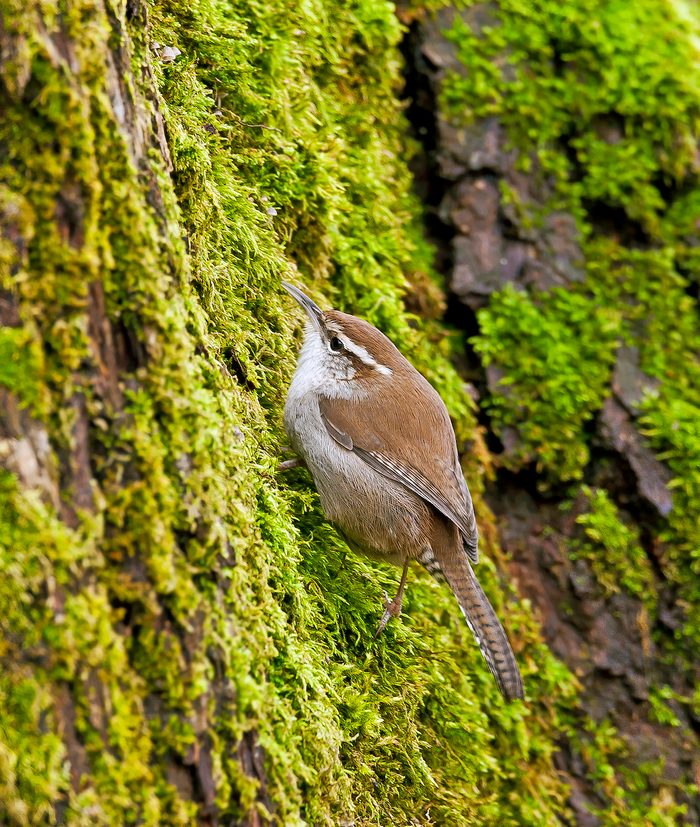
Bewick’s Wren
The Bewick’s wren (pronounced BU–icks) are found along the Pacific coast, across the southern and central plains, and in pockets of the eastern region. The species has experienced a serious population decline east of the Mississippi River. In some regions this decline mirrors an expansion of the more aggressive house wren, but in other areas the drop in Bewick’s numbers occurred prior to the increase in house wrens.
Bewick’s wrens look like less colorful versions of Carolina wrens, but the ranges for the two similar species only overlap slightly in the central United States, so the bold white eyebrow usually makes identification straightforward. This species lives in scrubby habitats: pinyon/juniper in the Southwest and oak/chaparral on the West Coast. These wrens can also be found in urban locations and will use nest boxes.
Doug likes to describe the varied vocalizations of Bewick’s wrens as “a game of telephone that stretches across their entire range.” The birds learn their songs by imitating neighboring wrens. Slight variations play out to the extremes of the range, and birds in Oregon don’t sound much like the ones in southeastern Arizona.
Check out adorable baby wren photos.
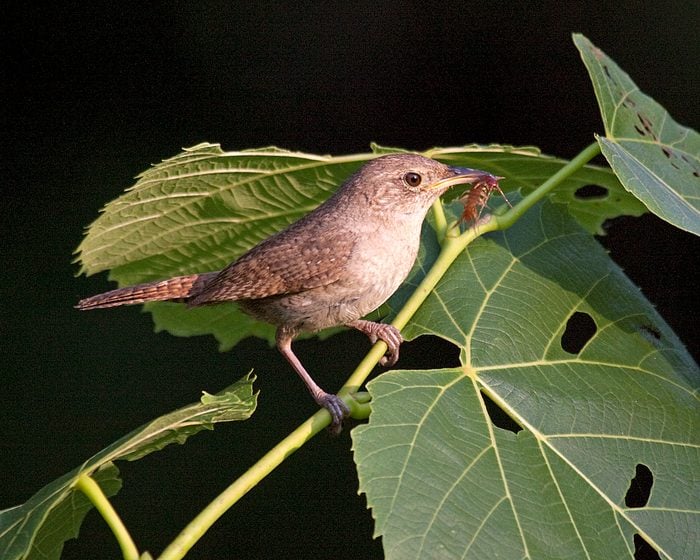
How to Attract Wrens
Wrens usually skip bird feeders, but they are enticed into backyard habitats that provide plenty of structure. If you want to draw wrens to your yard, there are three key ways to do it via birdscaping:
- Add appropriate native plants, such as ornamental grasses or trees, to your landscape.
- Build a brush pile.
- Create crannies and crevices with stones or lawn art.
Next, find out when house wrens return in spring.
